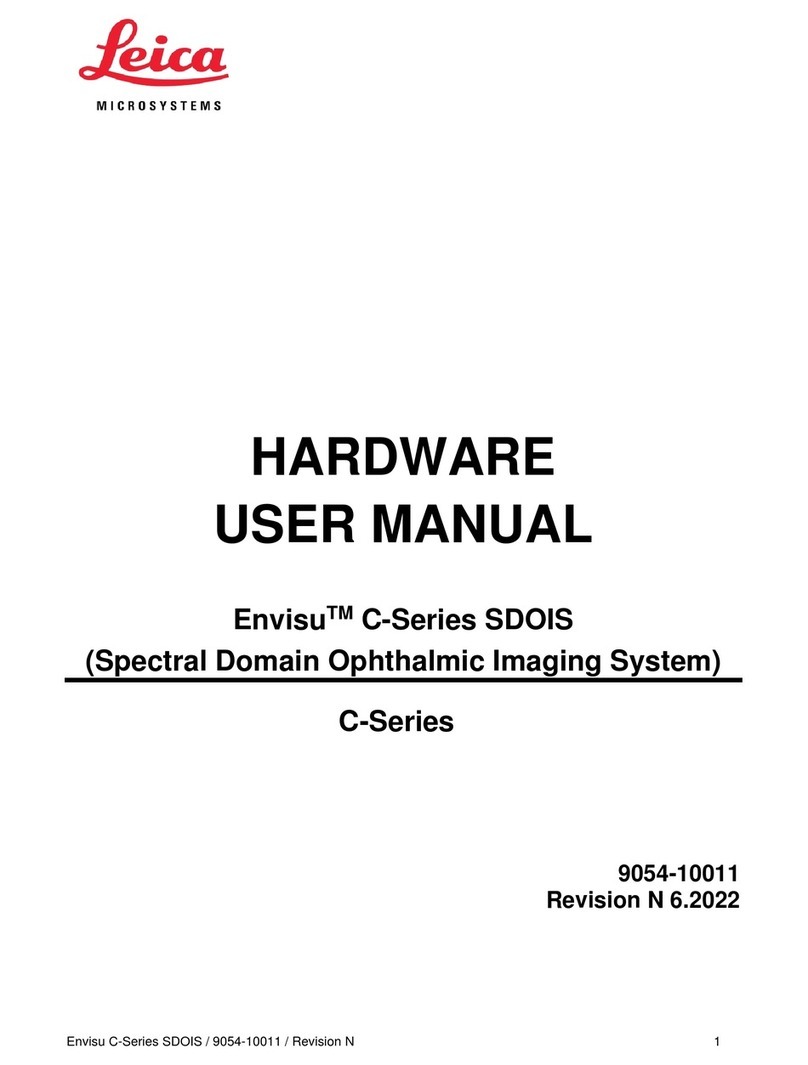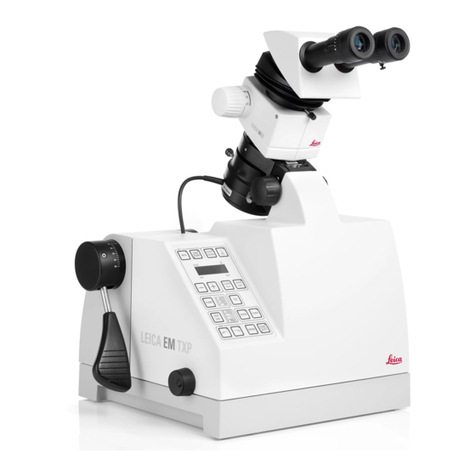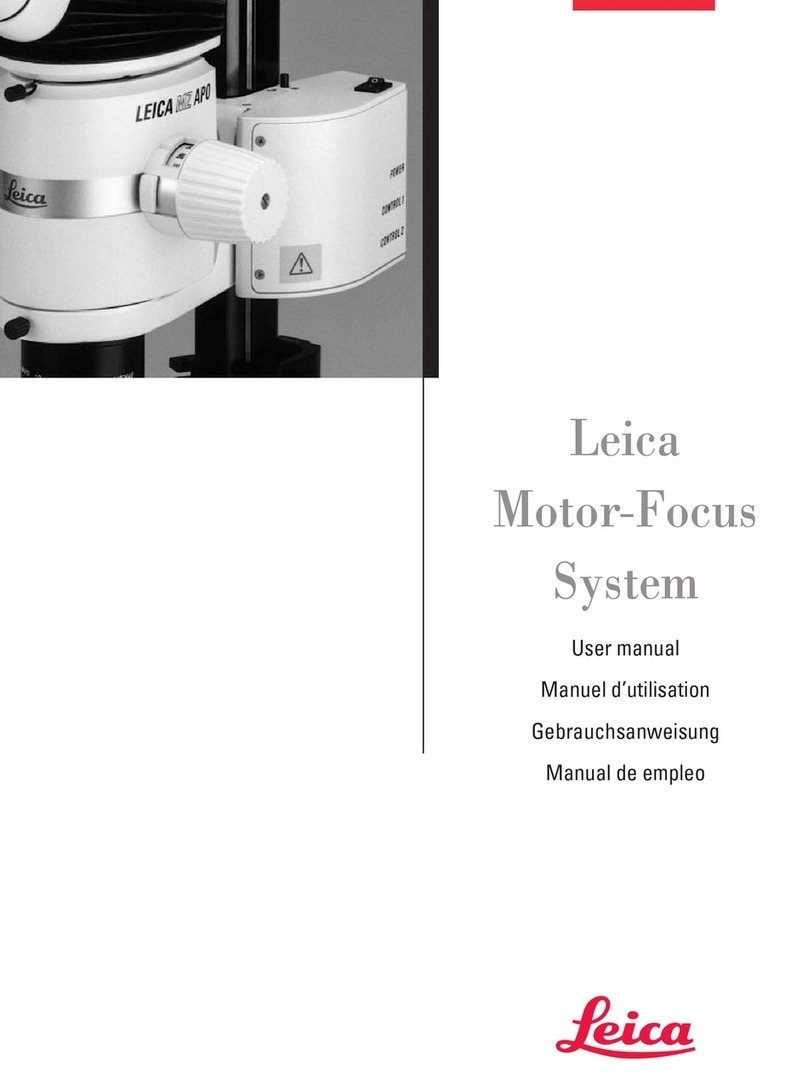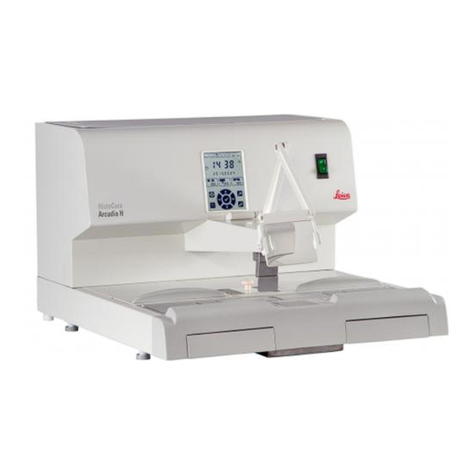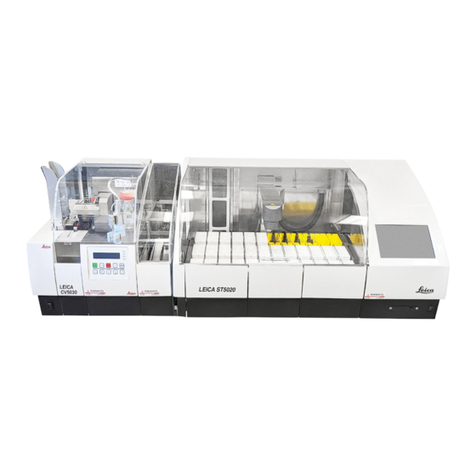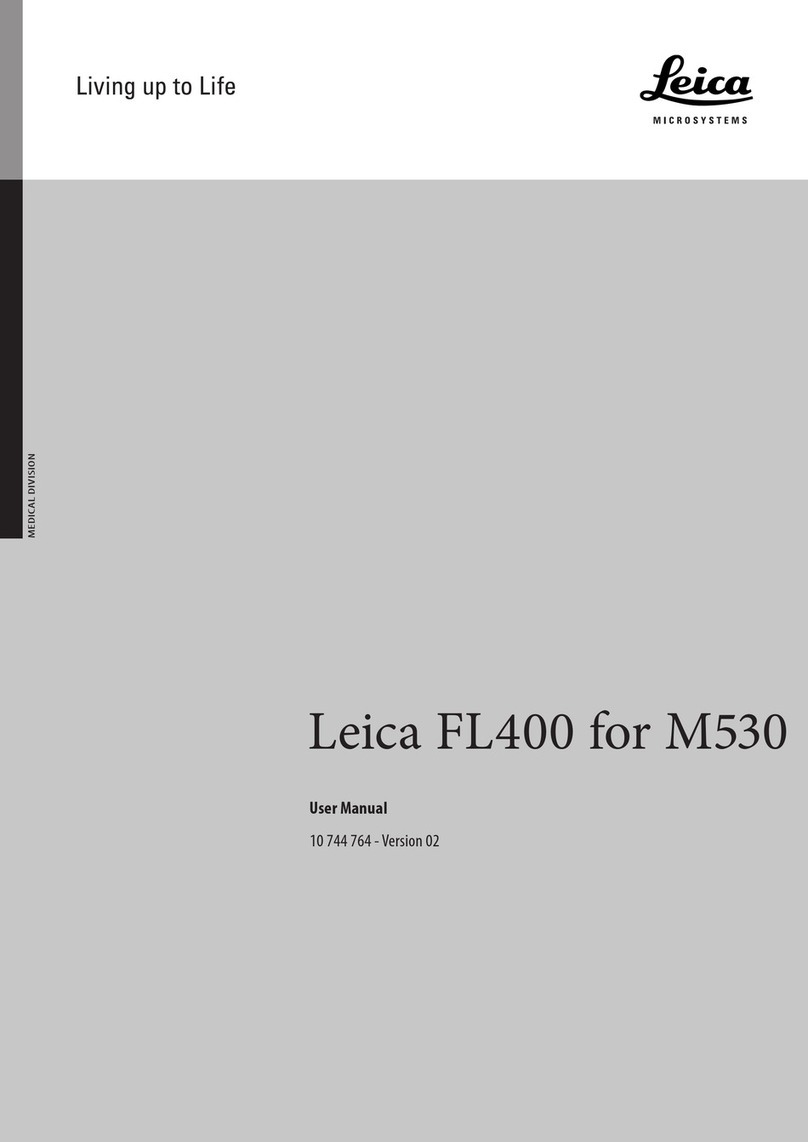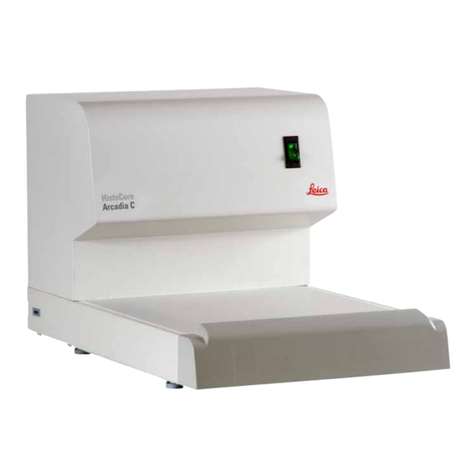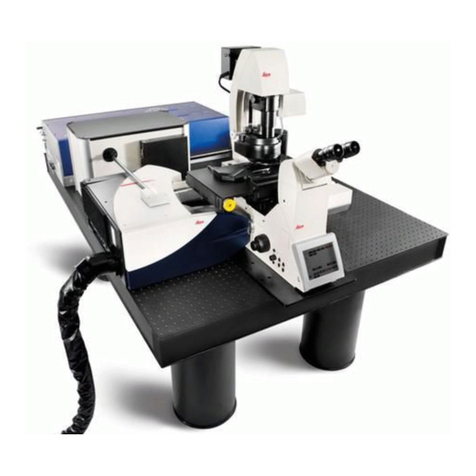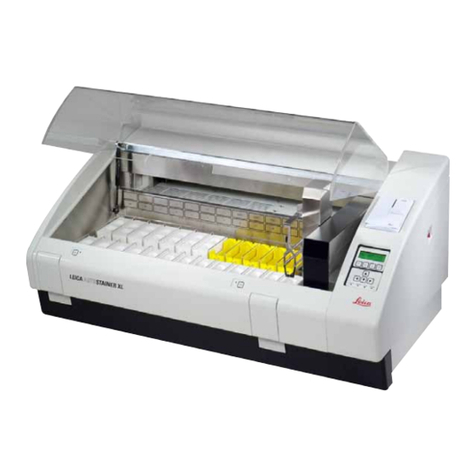5
Leica RM2245
TABLE OF CONTENTS
6.1.4 Quick clamping system ............................................................................................................................... 40
6.2 Specimen clamps and holders .................................................................................................................. 41
6.2.1 Standard specimen clamp.......................................................................................................................... 41
6.2.2 Vee insert ...................................................................................................................................................... 41
6.2.3 Foil clamp type 1........................................................................................................................................... 42
6.2.4 Foil clamp type 2........................................................................................................................................... 43
6.2.5 Universal cassette clamp ........................................................................................................................... 44
Universal cassette clamp, ice-cooled ...................................................................................................... 44
6.2.6 Super mega-cassette clamp ...................................................................................................................... 45
6.2.7 Holder for round specimens....................................................................................................................... 46
6.3 Knife holder base and knife holder ........................................................................................................... 47
6.3.1 Knife holder base, without lateral displacement feature ...................................................................... 47
6.3.2 Knife holder E/E-TC ...................................................................................................................................... 48
6.3.3 Knife holder N/NZ ........................................................................................................................................ 51
6.4 Blades/knives ............................................................................................................................................... 53
6.4.1 Disposable blades........................................................................................................................................ 53
6.4.2 Knives ............................................................................................................................................................ 53
6.5 Section waste tray ....................................................................................................................................... 55
6.6 Backlighting .................................................................................................................................................. 55
6.7 Tray ................................................................................................................................................................ 56
6.8 Freezer pack ................................................................................................................................................. 56
6.9 Universal microscope carrier .................................................................................................................... 57
6.10 Magnifying lens ............................................................................................................................................ 59
6.11 Cold light source .......................................................................................................................................... 60
6.12 Fiber-optic light guide ................................................................................................................................. 60
6.13 Ordering information ................................................................................................................................... 61
7. Troubleshooting.......................................................................................................................................... 63
7.1 Instrument malfunctions ............................................................................................................................. 63
7.1.1 Error reports ................................................................................................................................................. 63
7.1.2 Malfunctions, possible causes and troubleshooting ............................................................................. 64
7.2 Possible faults .............................................................................................................................................. 65
8. Cleaning and Maintenance ...................................................................................................................... 66
8.1 Cleaning the instrument .............................................................................................................................. 66
8.2 Maintenance ................................................................................................................................................ 68
8.2.1 Replacing fuses ............................................................................................................................................ 68
8.2.2 Maintenance instructions .......................................................................................................................... 69
8.2.3 Lubricating the instrument ......................................................................................................................... 70
9. Warranty and Service................................................................................................................................ 71
Peoples Republic of China ....................................................................................................................... 72
